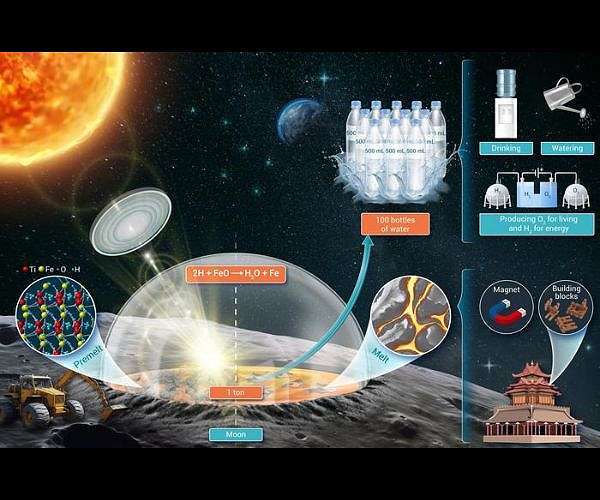25.08.2024

Water is vital for human survival on the lunar surface, making it a significant focus of research. A team led by Prof. WANG Junqiang at the Ningbo Institute of Materials Technology and Engineering (NIMTE) of the Chinese Academy of Sciences (CAS) has introduced a novel approach to generate substantial amounts of water through a reaction between lunar regolith and endogenous hydrogen.
Findings from past lunar missions, including Apollo and Chang'E-5, have confirmed the presence of water on the Moon. However, the water content in lunar minerals is exceedingly low, with concentrations ranging from 0.0001% to 0.02%. Extracting and using this water in situ remains a significant challenge.
"We used lunar regolith samples brought back by the Chang'E-5 mission in our study, trying to find a way to produce water on the Moon," said WANG.
The research demonstrated that by heating lunar regolith to over 1,200 K using concave mirrors, one gram of molten lunar regolith could produce 51-76 mg of water. This means that one ton of lunar regolith could yield over 50 kg of water, equivalent to around one hundred 500-ml bottles of drinking water. This amount could provide enough drinking water for 50 people for one day.
Furthermore, the study identified lunar ilmenite (FeTiO3) as containing the highest concentration of solar wind-implanted hydrogen among the five primary minerals in lunar regolith. This is attributed to its unique lattice structure, which features sub-nanometer tunnels.
In-situ heating experiments revealed that hydrogen found in lunar minerals is a valuable resource for water production on the Moon. This water could be utilized for drinking, plant irrigation, or electrochemically decomposed into hydrogen and oxygen, with hydrogen serving as an energy source and oxygen as a vital component for respiration.
These findings offer important insights into lunar water exploration and hold promise for the development of future lunar research stations.
Quelle: SD
